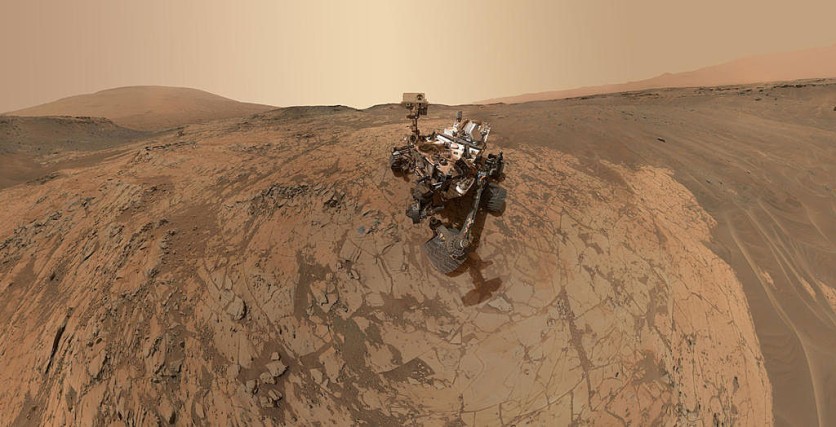NASA's Curiosity rover has marked an impressive milestone by completing 4,000 days on Mars since its historic landing in Gale Crater on August 5, 2012.
During this time, the rover has been diligently engaged in many scientific endeavors, including its recent feat of extracting its 39th rock sample for in-depth analysis.
NASA's Curiosity Rover on Mars
In its quest to investigate whether ancient Mars offered an environment conducive to microbial life, NASA's Curiosity rover has been steadily making its way up the base of Mount Sharp, a towering structure spanning three miles in height.
The layers of this geological formation hold critical information about the historical climate variations on Mars, according to NASA.

The most recent sample was procured from a site nicknamed "Sequoia," a part of a mission tradition of naming targets after locations in California's Sierra Nevada.
Scientists are particularly eager to glean insights from this sample about Mars' evolving climate and habitability, especially as this region became enriched in sulfates - a clear indication of a watery environment that gradually evaporated billions of years ago.
"The types of sulfate and carbonate minerals that Curiosity's instruments have identified in the last year help us understand what Mars was like so long ago. We've been anticipating these results for decades, and now Sequoia will tell us even more," explained Ashwin Vasavada, Curiosity's project scientist.
The endeavor to decode the ancient climate of Mars involves careful analysis. Researchers recently made a significant discovery using data from Curiosity's Chemistry and Mineralogy instrument, pinpointing a magnesium sulfate mineral known as starkeyite.
This mineral is typically associated with extremely dry climates, similar to the modern environment of Mars, according to NASA.
The team theorizes that as sulfate minerals initially formed in salty water that were undergoing evaporation billions of years ago, these minerals eventually transitioned into starkeyite, mirroring the planet's progression toward its present state. Such findings add depth to scientists' comprehension of Mars' contemporary conditions.
Read Also : NASA Embarks on Finding Ice on Mars With New Map
NASA's Curiosity Eyes
Engineers are currently addressing an issue with one of the rover's primary "eyes," the 34 mm focal length left camera of the Mast Camera, or Mastcam instrument.
This camera is pivotal for providing color images of the rover's surroundings and plays a crucial role in analyzing rocks' compositions based on their reflected light spectra.
The Curiosity mission continues to push boundaries, and engineers are confident in its ability to operate for many more years, thanks to meticulous monitoring and innovative problem-solving.
As November approaches, the team is gearing up for a hiatus. This pause is necessitated by an astronomical event called solar conjunction, where Mars will temporarily be obscured by the sun.
This alignment can lead to interference between solar plasma and radio signals, potentially disrupting communication. To navigate this period safely, engineers have outlined a task list for Curiosity from November 6 to 28, after which regular communications can resume.

![Apple Watch Series 10 [GPS 42mm]](https://d.techtimes.com/en/full/453899/apple-watch-series-10-gps-42mm.jpg?w=184&h=103&f=9fb3c2ea2db928c663d1d2eadbcb3e52)



